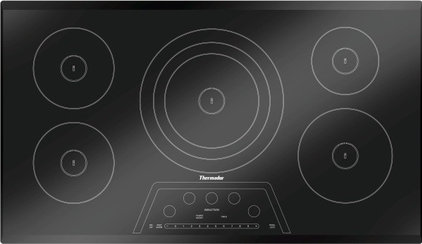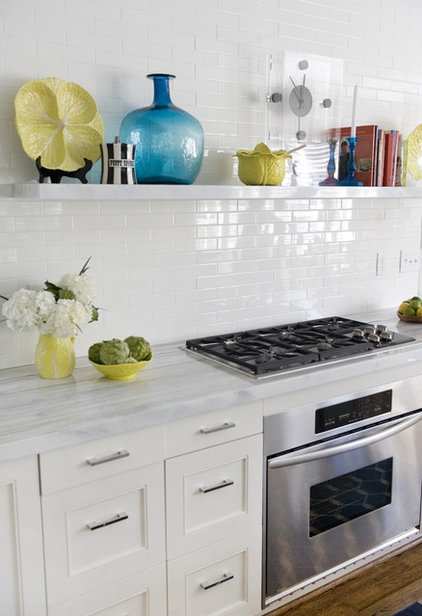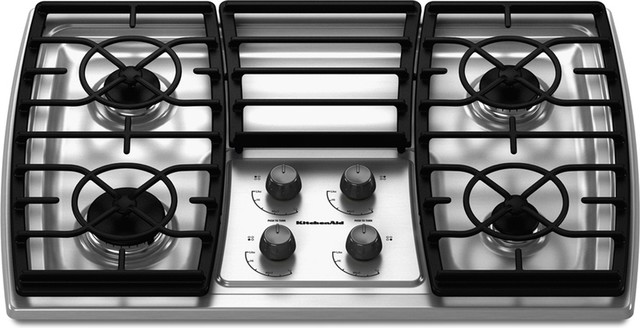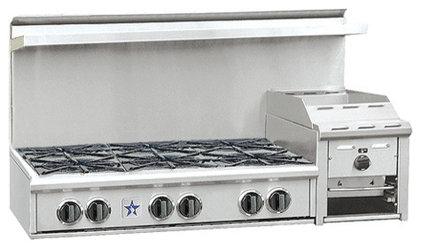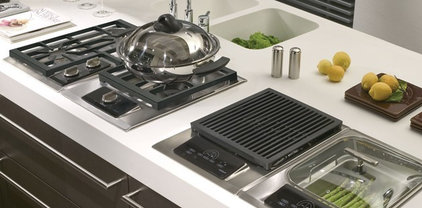Find the Right Cooktop for Your Kitchen
In my opinion, it's really hard to compare gas and electric cooktops, because they're such different cooking experiences — it's like trying to compare a grill to a griddle. But no matter what your preference, here's a basic guide to the options.
|
Induction and radiant electric cooktops. It
can be hard, or even impossible, to tell the difference between an
induction cooktop and a radiant electric cooktop just by looking at
them. They often look exactly the same, with sleek ceramic glass
surfaces rather than exposed coil rings.
The main difference between the two is how they provide heat. An induction cooktop uses an electromagnetic field that heats the cooking vessel rather than the cooktop itself. Induction cooktops heat up instantly and provide very precise temperature control. Induction-compatible cookware is typically needed for induction cooking. A radiant cooktop heats and cools down gradually, much like a traditional oven. It does not require specialized cookware. Though it's not generally as well known as a gas cooktop, many professional cooks favor it. |
|
Drop-in gas cooktops. Drop-in
gas cooktops sit on top of the counter. They traditionally have control
knobs on top as well. Most drop-in gas cooktops have sealed burners and
aren't as powerful as their range-top alternatives. They're usually 30
or 36 inches wide and offer a burner option only, not the integrated
grills or griddles that can be found in range-top options.
|
|
Gas range tops. A gas
range top differs from a drop-in cooktop in that it looks like a range
that is missing the oven. They traditionally have control knobs on the
front apron rather than on top. Gas range tops are usually more powerful
than their cooktop counterparts, with more BTUs.
Range tops typically come in all the same cooking surface arrangements as their range alternatives. A 30-inch model usually has four burners, just like a standard range does, while larger sizes offer more options, such as griddles and grills. These units often offer a specific simmer burner as well. Some manufacturers allow you to choose from closed or open burner options. |
|
by knowles ps
by knowles ps
|
|
Range tops with griddles or grills
included usually start in a 36-inch size and go up to 48- and 60-inch
models. The arrangement of the burners is typically customizable. A
36-inch range top has a 12-inch griddle, whereas a 48-inch or larger
one might have the option of a 24-inch griddle.
|
|
by AJ Madison
by AJ Madison
|
|
A few manufacturers offer a
48-inch range top with a French top, which has concentric rings between
the burners. These rings distribute heat across the entire space they
occupy, with the hottest spot in the center and the cooler areas on the
edges. This allows you to simmer, cook sauces slowly and have a few
different pots on the surface at one time.
|
|
by SH-Interiors
by SH-Interiors
|
|
Modular cooktops. Independent,
single-function cooktops are wonderful for small kitchens and allow for
more flexibility in a larger kitchen. They usually come in 12-, 15- or
24-inch sizes. Options include standard gas burners, a wok cooker,
grills, induction burners and steamers.
|
|
You can combine independent
cooktops to create your own custom large-scale cooktop or separate the
different elements into independent cooking stations.
|
|
A single countertop steamer is very popular with those looking for healthy cooking options.
|

